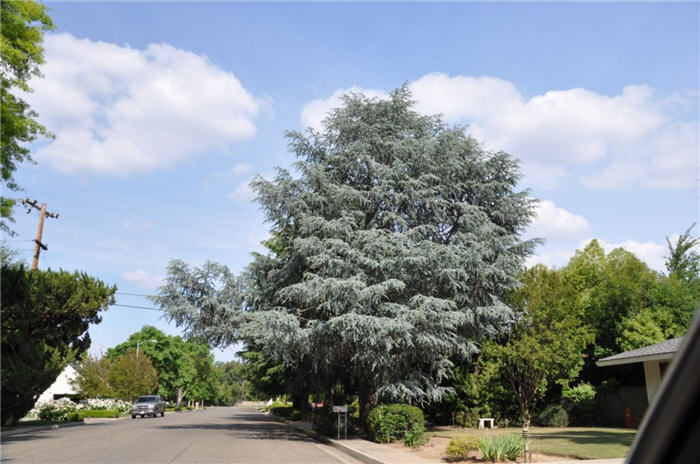| Botanical Name: Cedrus atlantica 'Glauca' | |
| Common Name: Blue Atlas Cedar |

-
Anatomy
-
Culture
-
Design
Plant Type
Tree, Conifer
Height Range
25-40', 40-60'
Flower Color
n/a
Flower Season
n/a
Leaf Color
Blue Green, Silver
Bark Color
Grey
Fruit Color
Brown
Fruit Season
Intermittent, Persistent
Sun
Full
Water
Medium
Growth Rate
Slow
Soil Type
Sandy, Clay, Loam
Soil Condition
Average, Rich, Well-drained
Soil pH
Acid, Neutral
Adverse Factors
n/a
Design Styles
Formal, Ranch, Seascape, Woodland
Accenting Features
Silhouette, Specimen
Seasonal Interest
Winter, Spring, Summer, Fall
Location Uses
Background, Park
Special Uses
Shade Tree
Attracts Wildlife
n/a
Information by: Stephanie Duer
Photographer: Steve Mullany
Photographer: Steve Mullany
-
Description
-
Notes
As a large, slow-growing conifer, Blue Atlas Cedar requires ample room for growth. It has a broad, pyramidal form and is an eye-catching specimen for a large landscape. It's needles are 1 inch long, and are a beautiful shade of silvery blue. In order to develop its best color, the tree needs to be exposed to full sun. It can reach up to 40 to 60 feet tall and up to 30 feet wide. There is also a weeping form, Cedrus atlantica 'Glauca Pendula.' Cedars have lovely cones, emerging bluish when young and aging a reddish brown.
The biggest mistake folks make when planting this tree is not giving it the room it needs to grow. It is a large tree. Prefers well-drained soils that are rich and loamy, though it will tolerate sandy or clay soils as long as they are not perpetually moist. Sun to part shade.